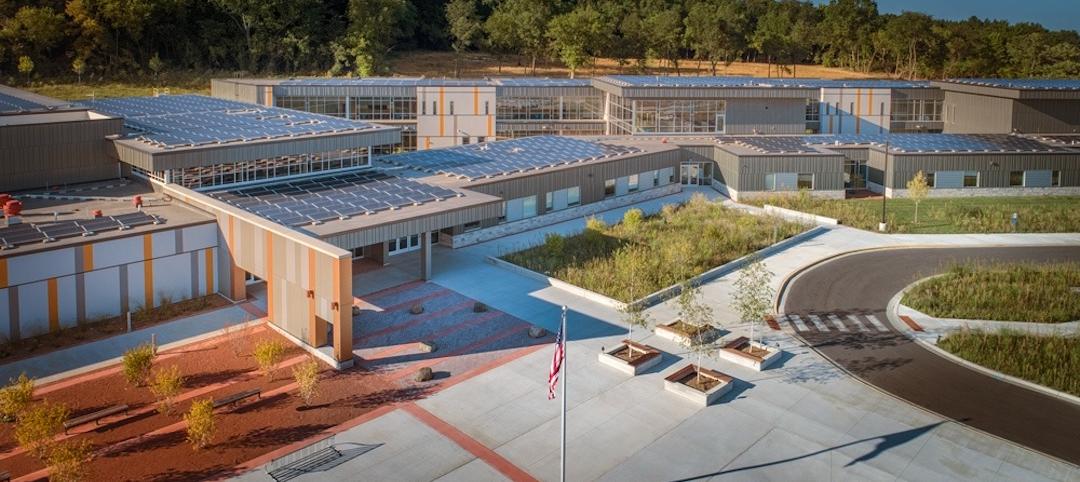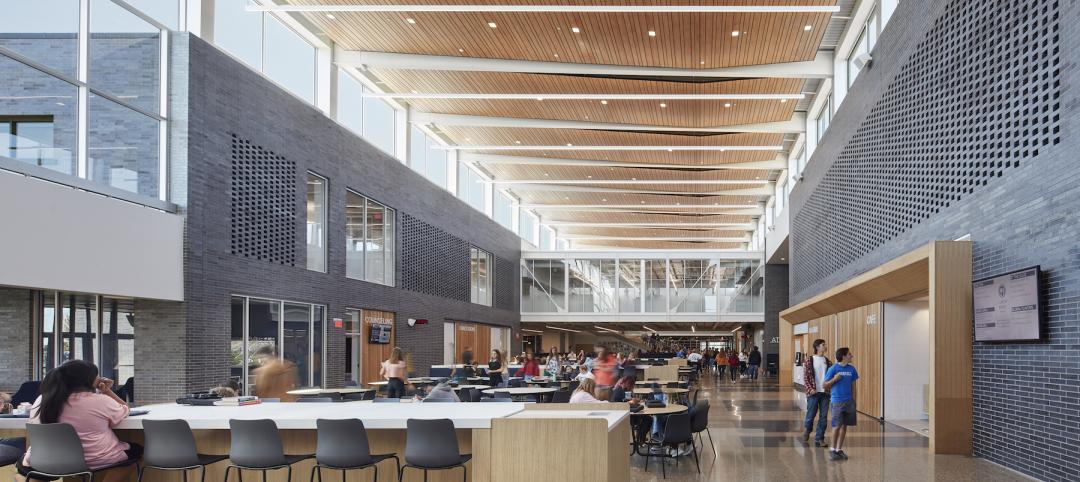In 1995, the city of New Haven, Conn., launched a program to build five new schools and renovate and upgrade seven others. At the time, city officials could not have envisioned their program morphing into a 17-year, 44-school, $1.5 billion project to completely overhaul its entire portfolio of K-12 facilities for nearly 23,000 students.
New Haven's massive undertaking is being handled by the Glastonbury, Conn., office of program manager Gilbane Building Companies (ranked #7 for CMs on BD+C's 2006 Giants 300 list), whose responsibilities on the project evolved along with the project itself.
Gilbane was originally hired as one of three construction managers who were to divvy up work on an 11-school, $23 million program. It didn't take long, however, for New Haven school officials to realize that they lacked the skills and resources to oversee the project, so Gilbane found itself competing for—and winning—the role of program manager. In 1998, the firm was asked to review the district's master plan; two years later, they unveiled a new multiphase plan that involved construction and renovation of 46 schools (later trimmed to 44), with a budget exceeding 10 figures.
Gilbane VP Tom Rogér says it took some time for the firm to gain the city's trust. “The first couple of years, there was a real learning curve on both our parts,” says Rogér. “What helped us a lot was that when we said something was going to happen, it happened. That was something they weren't used to. It was a revelation!”
Those hallelujah moments led to the city's approval of the dramatically expanded construction program. “After things started happening and they believed that our project work wasn't b.s., the city's board of aldermen asked why we weren't doing every single school,” says Rogér. The city even used the construction program as an opportunity to realign its grade structure, eliminating middle schools (which had performance, staffing, and safety problems) and creating K-8 facilities and 9-12 high schools.
Funding the original 11-school program involved a “stroke of genius” by the city's finance director, according to Rogér. The finance director bundled 300-400 tax-delinquent properties and sold them to a developer for $23 million, all of which went into a school construction trust fund. Later, the city relied on its bonding authority to fund the projects without having to rely on voter referendums.
One early decision rested on the design of the schools. “From a cost and schedule standpoint, I suggested using templates, and I got an emphatic no,” says Rogér. “They wanted each project to have its own architectural identity.” As a result, each school has a program appropriate to its neighborhood and academic focus. To maintain consistency and continuity, however, Gilbane authored a set of building standards (now in its ninth edition) that Building Teams are required to follow.
Working with 20 different architects and 10 different construction management firms proved wearying at times, but Rogér says that Gilbane made it clear that their firm was running the program and that they would manage it to everyone's advantage. “That added a lot of trust and credibility,” says Rogér. While Gilbane manages the RFQ process, however, the city makes the ultimate decision on which firms get the jobs.
Currently, there are 22 completed school projects and 10 active projects: five under construction and five in the design phase. The first was completed in 1998 and the last school is expected to be finished in 2012, at which time the program will have constructed 4.5 million sf. At its peak in 2006, Gilbane had a dedicated full-time staff of 22 on the projects; current staff totals 17. About 80-90% of the staff came from within Gilbane.
“One of the biggest benefits to New Haven—or any school district—is that hiring an outside program manager lets you hit the ground running with experienced people, systems, and relationships to make things happen,” says Rogér. “A public entity has to staff up or convert existing in-house staff to run a program of this size. Your building engineer who's been doing sidewalks for the past few years should never be put in the position to oversee a $1.5 billion program.”
On the other hand, Roger acknowledges, “there are some programs where the in-house people hate you because they think they could do a better job. We were lucky, in that the city tried to do the work themselves for a couple of years and they saw how hard it was. New Haven is happy to have us.”
|
Related Stories
K-12 Schools | Mar 8, 2022
Design delivers new media messages for schools
Media centers are no longer physically confined to one room.
Resiliency | Feb 15, 2022
Design strategies for resilient buildings
LEO A DALY's National Director of Engineering Kim Cowman takes a building-level look at resilient design.
Coronavirus | Jan 20, 2022
Advances and challenges in improving indoor air quality in commercial buildings
Michael Dreidger, CEO of IAQ tech startup Airsset speaks with BD+C's John Caulfield about how building owners and property managers can improve their buildings' air quality.
K-12 Schools | Jan 4, 2022
Forest Edge Elementary School becomes the largest net zero verified education project in the U.S.
Bray Architects designed the project.
K-12 Schools | Dec 27, 2021
A ‘new urbanist’ middle school takes shape in Austin
Design-build delivery, still rare for Texas school construction, fit expeditiously for this project.
K-12 Schools | Dec 10, 2021
Trends in K-12 school design, with Dan Boggio and Melissa Turnbaugh of PBK
Dan Boggio and Melissa Turnbaugh of PBK, the largest K-12 design firm in the U.S., discuss the favorable market conditions and the latest trends in K-12 school design with BD+C's Rob Cassidy.
Giants 400 | Nov 18, 2021
2021 K-12 School Sector Giants: Top architecture, engineering, and construction firms in the U.S. K-12 school facilities sector
PBK, Gilbane, AECOM, and DLR Group head BD+C's rankings of the nation's largest K-12 school facilities sector architecture, engineering, and construction firms, as reported in the 2021 Giants 400 Report.
K-12 Schools | Nov 16, 2021
Massachusetts’ first net-positive energy public school opens
Part of the town of Westborough’s goal to be carbon-neutral by 2035.
K-12 Schools | Nov 14, 2021
New Blackwater Community School completed for Gila River Indian Community, in Arizona
Construction on the new Blackwater Community School, a two-story structure on the Gila River Indian Community, located southeast of Phoenix, Arizona, was completed on August 31, 2021.
K-12 Schools | Nov 10, 2021
K-12 school design innovation: 'Learning Everywhere' and the mobile classroom
Last September, AIA San Francisco awarded the Professional Category in its 2021 Future Classroom Competition to a five-person team from Culver City, Calif.-based Berliner Architects. The firm was selected for its “Learning Everywhere” idea that features a mobile strategy for education at school, home, on field trips, and in transit. BD+C's John Caulfield discuss that concept with Richard Berliner, AIA, Principal, Berliner Architects.
















